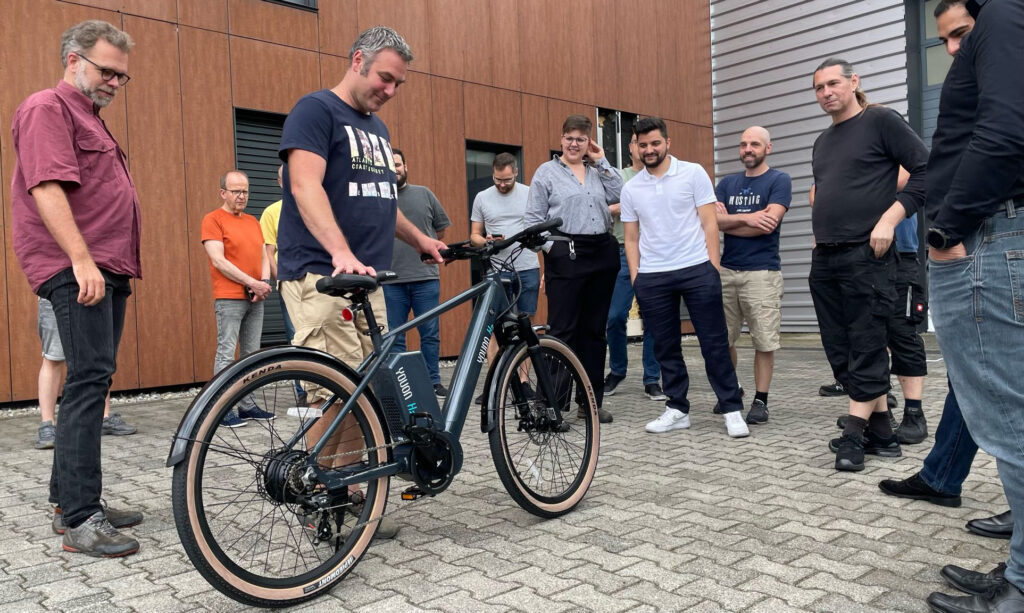The colleague with the bike is ZBT department head Dr Jörg Karstedt, and he has ordered a fuel cell bike for research purposes. It comes with an electrolyser for use at home and a metal hydride storage unit for the hydrogen supply.
Refuelling with Home-Electrolyser
After thoroughly studying the operating instructions with the help of an online translation tool, as they are written exclusively in Chinese, he was able to successfully fill the storage tank with the intended 20 grams of hydrogen in around 6 hours using the home electrolyser. It doesn’t sound like much, but according to the manufacturer, it’s enough for up to 60 kilometres of electric assistance when cycling.
Impressions from the Test Drive
And then some of my colleagues, who are under or not too far over the maximum permitted rider weight of 75 kg, set off on short test rides. And what can we say: the bike runs and the fuel cell supplies power for the electric motor. The manufacturer promises an astonishing 5-year warranty on the fuel cell stack. The workmanship with some sharp edges is not entirely convincing, and the components on the bike side are ‘rather cheap’ overall, according to the bike-savvy part of the staff, but there are also products from well-known manufacturers.
Our bike, including electrolyser and storage unit, was priced in the range of significantly higher-quality branded e-bikes. (However, the supplier has increased the price significantly in the meantime.) A quick search revealed that the bike is sold in China at an astonishingly favourable price. If the production costs for the components of the fuel cell system and the electrolyser continue to fall, we think that the prices could be competitive in the future.
The fuel cell bike is similar in weight to an e-bike with a battery pack. And theoretically, you would only need to swap the hydrogen storage tank and could immediately continue riding with e-assistance if the 50 to 60 km range on one tank filling is not enough.

